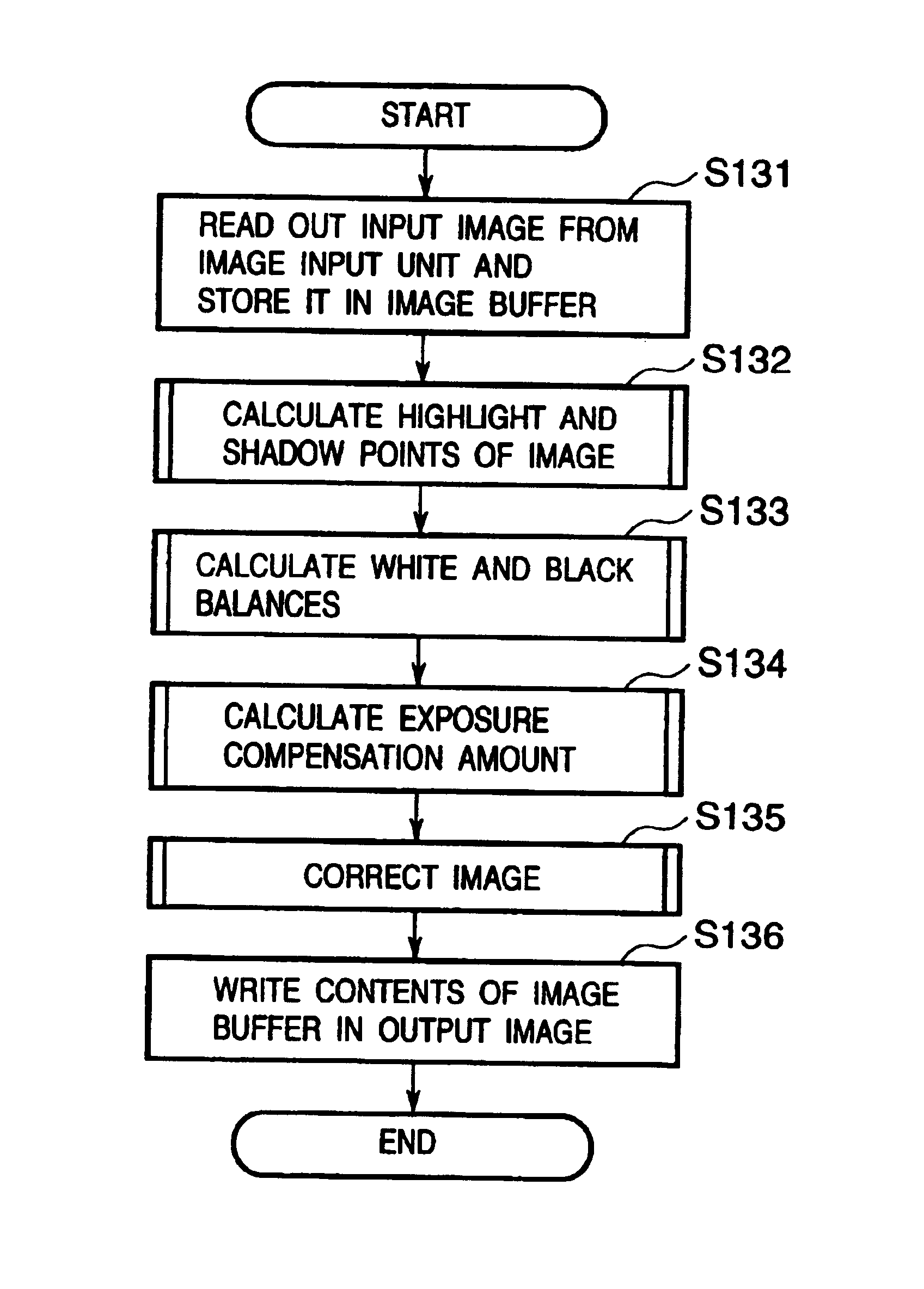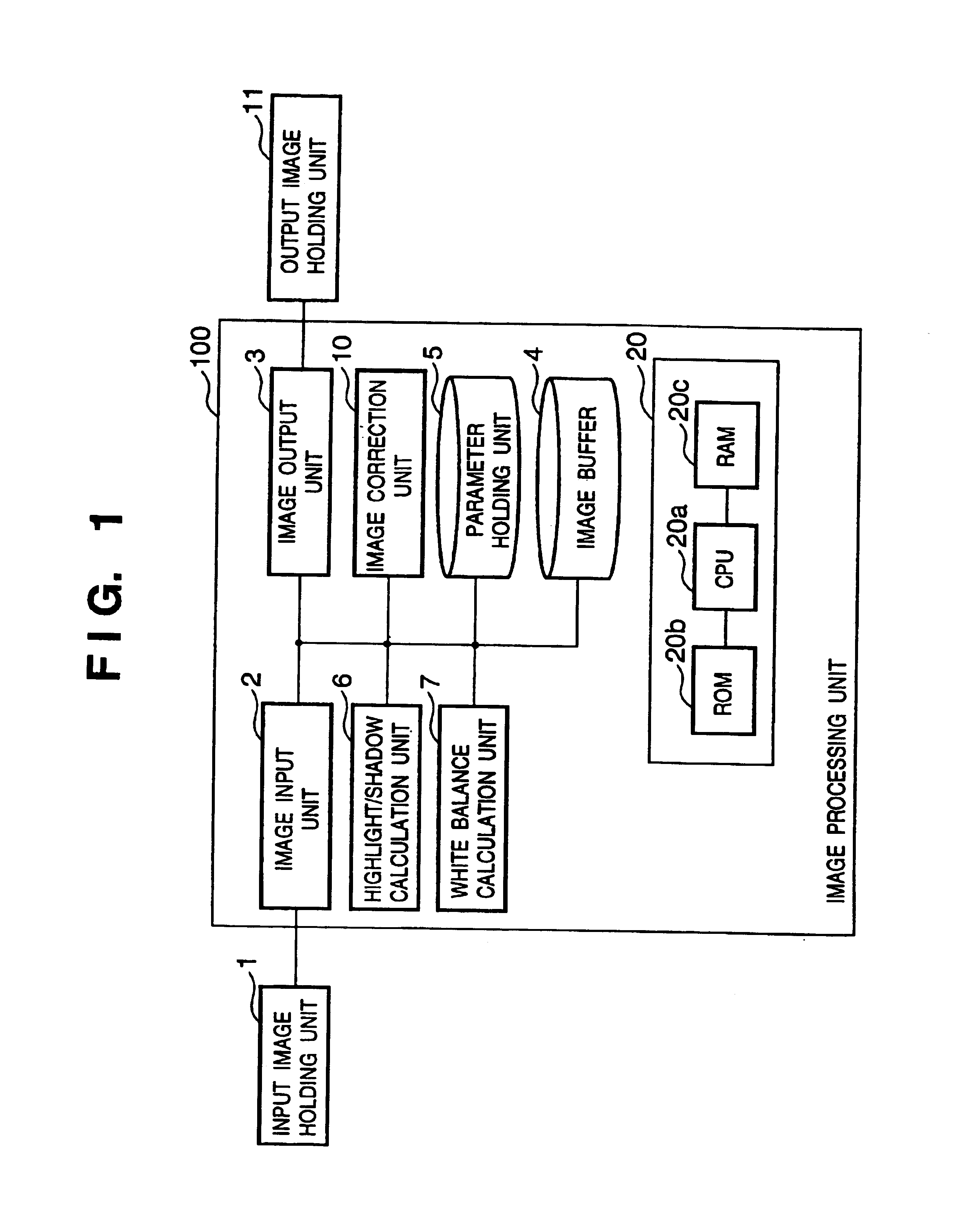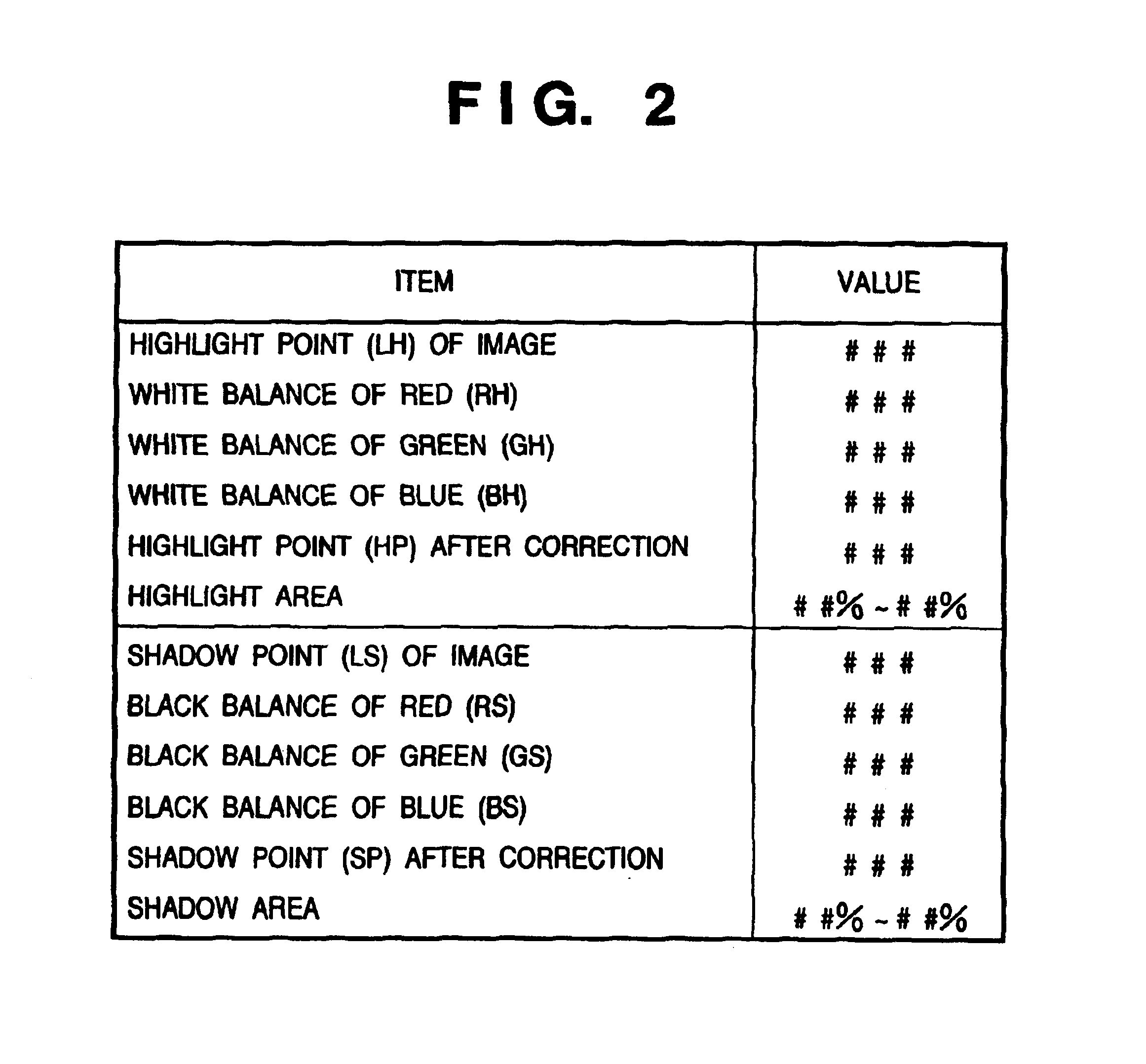Image processing apparatus and method
a technology of image processing and apparatus, applied in the field of image processing apparatus and method, can solve the problems of inability to properly check the original image's exposure state, inability to perform proper exposure compensation, and inability to achieve effective adjustmen
- Summary
- Abstract
- Description
- Claims
- Application Information
AI Technical Summary
Benefits of technology
Problems solved by technology
Method used
Image
Examples
first embodiment
[0090]First of all, in step S191, as in the first embodiment, a lookup table (LUT 1) for color balance correction is formed on the basis of white balance data RH, GH, and BH, black balance data RS, GS, and BS, and highlight and shadow points HP and SP after correction, which are held by the parameter holding unit 5. FIG. 15 shows an example of this LUT. Referring to FIG. 15, the dotted straight line represents characteristics obtained when no exposure compensation is performed (the luminance remains unchanged before and after correction).
[0091]In step S192, to perform exposure compensation for the entire image, LUT 2 for exposure compensation is formed on the basis of the average luminances (AVE and NAVE) of the image before and after correction, obtained in advance. FIG. 15 shows an example of LUT 2 formed in this case as well. Referring to FIG. 15, LUT 2 is expressed by the two straight lines plotted by connecting the point at which the average luminance (AVE) before correction is...
second embodiment
[0093]As described above, when exposure compensation is to be performed for an image, the highlight and shadow points (LH and LS) of the image before correction are calculated, and the exposure state of the image is determined on the basis of these values. The conversion straight lines (straight lines A and B) to be referred to in exposure compensation are selectively switched on the basis of the determination result, thereby performing correction with a strength corresponding to the exposure state of the image. That is, appropriate exposure compensation can be performed in accordance with the exposure state of the image by determining the exposure compensation amount in consideration of the highlight and shadow points of the image.
[0094]Appropriate exposure compensation can therefore be performed for even an image having a special exposure state as in a snow scene, a night scene, or the like.
[0095]In this embodiment, the exposure compensation amount is determined on the basis of t...
third embodiment
[0099]FIG. 17 is a flow chart showing an outline of a white balance adjustment method according to the First of all, in Step S201, an image input unit 2 reads out image data from an input image holding unit 1 and stores it in an image buffer 4. In Step S202, a highlight / shadow calculation unit 6 calculates the highlight and shadow points of the image data stored in the image buffer 4. The details of this processing are shown in detail in FIG. 18 and will be described later.
[0100]In Step S203, a white balance calculation unit 7 calculates the white balance and black balance of the image data stored in the image buffer 4. Since this processing is the same as step S3 in FIG. 3 in the first embodiment, a detailed description thereof will be omitted.
[0101]In Step S204, the white balance correction unit 12 corrects the white balance calculated in Step S203 in accordance with the scene of the image. The details of this processing are shown in FIG. 20 and will be described later.
[0102]In S...
PUM
 Login to View More
Login to View More Abstract
Description
Claims
Application Information
 Login to View More
Login to View More - R&D
- Intellectual Property
- Life Sciences
- Materials
- Tech Scout
- Unparalleled Data Quality
- Higher Quality Content
- 60% Fewer Hallucinations
Browse by: Latest US Patents, China's latest patents, Technical Efficacy Thesaurus, Application Domain, Technology Topic, Popular Technical Reports.
© 2025 PatSnap. All rights reserved.Legal|Privacy policy|Modern Slavery Act Transparency Statement|Sitemap|About US| Contact US: help@patsnap.com



